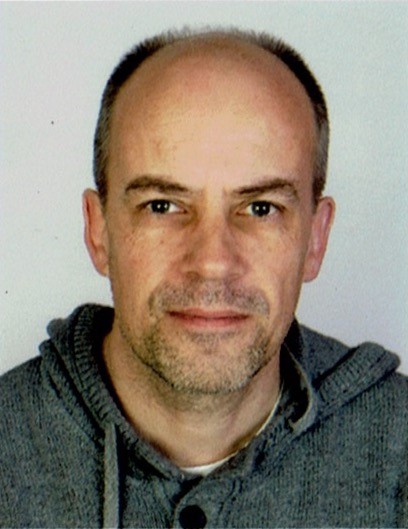|
|
Coen de Graaf ICREA Department of Physical and Inorganic Chemistry Universitat Rovira i Virgili. Marcel·lí Domingo 1. 43007 - Tarragona (Spain) Tel: +34977559569 coen.degraaf(ELIMINAR)@urv.cat IRIS: 321879 |
Research
I'm graduated in 1993 in Chemistry at the University of Amsterdam (final thesis: Quantum molecular dynamics simulations of an excess electron in dense He, supervised by S. W. de Leeuw)and obtained my PhD degree in 1998 in Mathematics and Natural Sciences (Theoretical Chemistry) from the University of Groningen (Netherlands). My dissertation was on the theoretical description of local excitations and magnetism in late transition metal oxides, supervised by R. Broer and W. C. Nieuwpoort.
After a two-year Marie Curie research training grant for a Post-Doc in the group of Prof. F. Illas (1998-2000, University of Barcelona) with focus on the magnetism in low-dimensional Heisenberg systems as spin chains, spin ladders, two-dimensional lattices, I was selected in the first call of the Ramón y Cajal program for a tenure track position at the Rovira i Virgili University, Tarragona (2001-2006). Main focus of the project was the extraction and rationalization of electronic structure parameters in oxides related to the high Tc superconductors. These microscopic parameters were used to describe macroscopic properties by Monte Carlo simulations or diagonalization of model Hamiltonians.
In 2006 I was appointed as Research Professor of the Catalan Institution for Research and Advanced Studies (ICREA) positioned in the Department of Physical and Inorganic Chemistry of the Rovira i Virgili University.
Main research topics are organized along four different lines
(i) Molecular magnetism: continuing the long-standing experience of the URV group in the application of variational and perturbative ab initio methods to systems with unpaired electrons, trying to rationalize exchange interactions and anisotropy.
(ii) Spin states in transition metal complexes and light-induced magnetism: Accurate estimates of the relative energies of different spin states in transition metal complexes is a relevant yet very delicate task for theoretical chemists. Over the last years, we have approached this question from a wave function based approach with reasonable success, although new alternative schemes are being investigated at present.
(iii) Excited state deactivation in spin crossover complexes: A rather large group of transition metal complexes change from diamagnetic to paramagnetic upon the absorption of light. Although a lot is known about the deactivation mechanisms of the excited states, there is still a vivid debate about some essential points. Over the years we have been improving the theoretical description of the excited states and the deactivation pathways, and at present we are developing model Hamiltonians that can be used in a full quantum mechanical simulation of the complex.
(iv) Conduction properties of nanostructures: After addressing the conduction properties of the so-called extended metal atoms chains (EMACs), we are at present investigating the behaviour of polyoxovanadates absorbed on a gold surface. There is experimental evidence that a stepwise increase of the current can be observed.
At present, I'm setting up a new research line focused on the further development of the GronOR code, a program for non-orthogonal configuration interaction. This is a joint project with the University of Barcelona, University of Groningen (Netherlands) and Oak Ridge National Laboratory (Tennessee, USA). Gronor is a massively parallel and GPU accelerated code with excellent scaling properties. We aim at a further optimization of the code and implementing new features to widen the application range of the NOCI. Simultaneously we are applying the method in the study of materials relevant for organic solar cells and photocatalysis.
In 2015, Springer published a monographic textbook on Magnetic Interactions in Molecules and Solids co-authored by me and Prof. Broer. This textbook is written for Master students with a Chemistry background and is used in the European Master in Theoretical Chemistry and Computational Modeling. In 2010 I was awarded a honorary professorship at the University of Groningen.
keywords:
Non-orthogonal configuration interaction (NOCI); Light-induced spin crossover; Magnetic anisotropy; Exchange interactions; Multiconfigurational wave functions
five selected publications:
- C. Sousa, C. de Graaf, A. Rudavskyi, R. Broer, J. Tatchen, M. Etinski, and C. M. Marian, Ultrafast deactivation mechanism of the excited singlet in the light-induced spin crossover of [Fe(bpy)3]2+, Chem. Eur. J. 19, 17 541-17 551 (2013).
- J.-P. Malrieu, R. Caballol, C. J. Calzado, C. de Graaf, and N. Guihéry, Magnetic interactions in molecules and highly correlated materials: Physical content, analytical derivation and rigorous extraction of magnetic Hamiltonians, Chem. Rev. 114, 429-492 (2014).
- X. Qi, S. Pillet, C. de Graaf, M. Magott, E.-E. Bendeif, P. Guionneau, M. Rouzieres, V. Marvaud, O. Stefanczyk, D. Pinkowicz, and C. Mathoniere, Photoinduced Mo-CN Bond Breakage in Octacyanomolybdate Leading to Spin Triplet Trapping, Angew. Chem. Int. Ed. 59, 3117-3121 (2020).
- R. K. Kathir, C. de Graaf, R. Broer, and R. W. A. Havenith, Reduced Common Molecular Orbital Basis for Nonorthogonal Configuration Interaction, J. Chem. Theory Comput. 16, 2941-2951 (2020).
- T. P. Straatsma, R. Broer, S. Faraji, R. W. A. Havenith, L. E. Aguilar Suarez, R. K. Kathir, M. Wibowo, and C. de Graaf, GronOR: Massively Parallel and GPU-Accelerated Non-Orthogonal Configuration Interaction for Large Molecular Systems, J. Chem. Phys. 152, 064 111 (2020).

